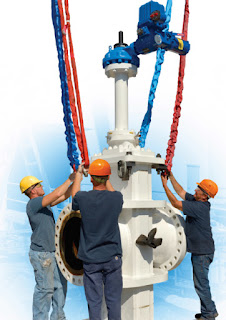
Weatherization is about more than just temperature when it comes to instrumentation. One example is the effect of storms and wind on draft range transmitters used to control furnaces in process plants.
Protecting Draft Range Transmitters from Storms and Wind
Normally, you wouldn’t think about an enclosure in the furnace or boiler area on these applications because they are measuring air flow or air pressure and are not subject to freezing. Pressure measurement in furnace and boiler combustion is critical for safety, efficiency and environmental control.
It doesn’t require heavy wind to cause problems: a 5 – 7 mph wind across the ambient pressure port might cause a 0.1” pressure change, 12 – 15 mph may create a 0.8” change. When the full range is 1 – 2” that can be a 40 – 80% error reading.
Even light wind across the open port can cause 10% error.
For example - in a a draft transmitter with full scale of 1” H2O ...
- 5 – 7 mph wind can cause up to a 10% full scale error.
- 12 – 15 mph wind can cause up to a 75% full scale error.
The pressure range is so small, often just 1 – 2” of H2O or 2 – 4 mm of Hg, that even a light breeze might cause automated dampers to fluctuate or trigger systems to shut down. Using a differential pressure transmitter the reference measurement is vented to atmosphere, where air flowing past the open port creates pressure changes and errors in furnace, heater and boiler combustion box pressure. As part of the Safety Instrumented System these measurement errors can create nuisance maintenance and shutdowns affecting the entire unit.
 A Solution That Works
A Solution That Works
The
O'Brien VIPAK Draft Transmitter enclosure, is a field tested and proven solution addressing the common sources of draft transmitter installation error with:
- Still Air Chamber
- Atmospheric Equalization
- Uniform Capsule Temperature
The O'Brien VIPAK draft range transmitter enclosure atmospherically equalizes the still air chamber for the transmitter and manifold. The pressure inside the enclosure changes at the same rate as the barometric pressure but is unaffected by wind or wind gusts.
The enclosure system also ensures that both sides of the instrument measurement capsule are at the same temperature. Since these instruments are often placed near the furnace, heater or boiler one side can be hotter than the other creating an error in measurement.
 Real World Use Case
Real World Use Case
A large refinery was experiencing furnace upsets and shutdowns caused by storms and wind in the unit. They installed two O'Brien Draft Transmitter Enclosures on their most trouble prone units as a trial. After a severe storm hit and the units with the O'Brien Draft Transmitter enclosures ran with no problems they installed another 128 protection enclosures. To date there have been no more upsets or shutdowns caused by wind induced measurement errors.
 The STILL AIR PORT: A Critical Component
The STILL AIR PORT: A Critical Component
The
O'Brien STILL AIR PORT is a critical component of the draft range transmitter solution. It equalizes the still air chamber for the transmitter and manifold, allowing the pressure inside the enclosure to change at the same rate as the barometric pressure and not allowing wind or wind gusts to have any affect.
For help in determining how you can protect your instrumentation from the effects of weather, contact
Swanson Flo. Call them at 800-288-7926 or visit their website at
https://swansonflo.com.








